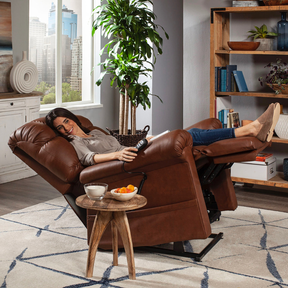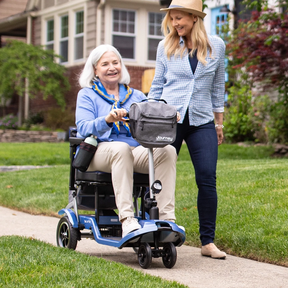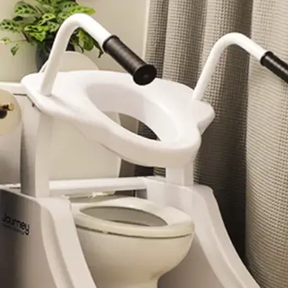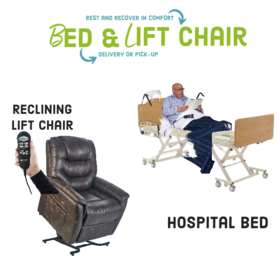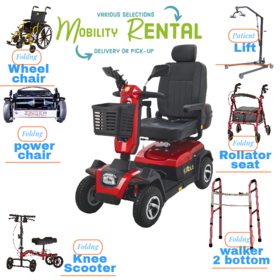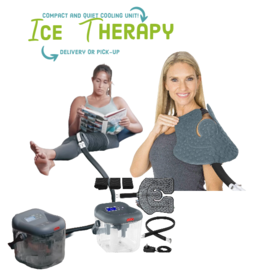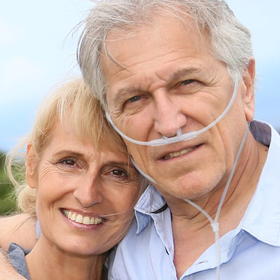Blog how to use Ice Cold and Hot Compression Therapy for Pain and Ailments?
Mon, 02/14/2022 - 18:19
Heat and cold therapies are pondered as non-invasive for the treatment of various health-related issues such as osteoarthritis, fibromyalgia, and rheumatoid arthritis. Though there are a number of ways to relieve the symptoms of these conditions using this method, an ice compression therapy machine for knee surgery is one of the most popular ones.
These therapies can also be used alternatively and are often recommended before the preclusion of exercise therapy.
How does it work?
Heat therapy causes vasodilation, increasing blood flow to the intended muscles. Oxygen and nutrient-rich blood, when reached to the target tissues, reduces pain and muscle spasms, and relaxes the tense muscles. It also removes waste from the cell and nourishes the tissues to increase the range of motion.
On the other hand, cold therapy or cryotherapy causes vasoconstriction that slows down the circulation of blood to the affected area. That, in turn, reduces inflammation, swelling, pain, and muscle tension. For example, ice face wraps are considered amazing to smooth the skin and eliminate inflammation.
The therapy also works best for short-term pains such as sprains or strains.
Following are the general health problems that can be dealt with easily with hot and cold compression therapy:
- Muscle spasms or aches

- Back pain
- Tender or swollen joints
- Stiff neck
- Finger and hand pain
- Knee pain
How to Apply?
- Cold Therapy
This therapy commonly uses ice cubes, commercial cold packs, coolant sprays, ice face wraps, ice towels, and ice baths. It can be done several times a day but for a short period, less than 15 minutes.
- Heat Therapy
Heating pads, hot packs, hot water bottles, steamed towels, and hot baths work incredibly in this therapy. It also offers immense benefits when used for a longer duration, unlike cold therapy. For minor stiffness, 15-20 minutes of therapy is sufficient. But hot therapy for pain relief requires 30 minutes that could last for 2 hours.
Benefits of Cold and Hot Compression Therapy
Heat and cold therapies can be done even at home without needing any special item. Small injuries and muscle stiffness are minor issues that could happen to anyone. These non-addictive therapies are better for health compared to painkillers. Many doctors recommend hot and cold medicines to ease the stiffness and reduce inflammation. But if the treatments don’t work, it’s good to consult to a doctor.
- Muscle tension
Heat therapy is used in routine for sports-related tissue injuries and muscle sprains. Applying heat to the affected site increases blood flow and makes muscles more flexible. Not just the injuries but this therapy also works wonders before any physical activity. It dilates the vessels and promotes more blood to flow, which mitigates the chances of getting sprains and muscle spasms.
People having a health condition that involves inflammation usually choose cold therapy. It reduces inflammation, swelling, and pain to the affected tissues and causes overall quick healing. Ice therapy machine for knee surgery is often recommended to speed up the recovery and relax muscles for increased mobility.
- Joint Pain
Whether it's acute or chronic joint pain, ice, and hot therapies are proven useful for the problems like arthritis. But make sure not to burn the skin. Always keep a towel on the skin before placing hot or cold packs.
Heat and cold compression therapy use the body’s mechanisms that act in a way to improve healing and reduce inflammation. For arthritis and another type of joint pains, both heat and ice therapies are great. Therefore, it’s a choice to pick any more comfortable and effective for the patient.
- Facial Problems
The popularity of ice therapy for the face is quite simple. This inexpensive, non-chemical-based, and easy-to-do therapy substantially benefits healthier skin. From eliminating the puffiness around the eyes, reducing oil, controlling acne to reduce wrinkles, and boosting the skin glow, cryotherapy is a great substitute to keep the skin healthy.
A gentle massage on the face with three to four ice cubes in a soft cloth is recommended in a circular motion. Ice face wrap provides an additional benefit by keeping extra pressure on the face. The wrap is a cold gel pack that covers all the essential parts of the face, including the jawline, chin, and cheeks.
Precautions
If the skin feels a little pink after heat or ice compression therapy, it’s completely normal. But there might be the case when too hot or too cold temperature causes skin damage. So do not cover the face with ice wrap longer than recommended. Look for the below-mentioned symptoms:
- Blisters
- Swelling
- Hives
- Dark-red, purplish-red, or spotty red-colored skin
Call your doctor when you notice any of these symptoms after removing the compress.
Tags
- contest
- event
- supplies
- design
- brand
- video
- Compression
- upright walker
- four wheel walker
- rollator
- wheelchair
- Ostomy
- elegantly
- elegantly
- accessibility
- Mobility
- knee walker rental
- knee scooter sales
- knee scooter
- post operative shoe
- anti-embolic stockings
- pain management
- cryotherapy therapy
- hot cold compress
- compression stockings
- lift chair
- wound Care
- air purifier
- fall prevention
- cushion
- oxygen therapy
- cpap, bipap
- Hospital Bed
- Life Aide
- EMS
- recovery
- splint
- knee brace
- Bathroom
- patient lift
- medical supply
- Wound dressings
- Lightweight Wheelchair
- hospital beds for sale
- sky medical supplies rentals
- compression socks
- Tegaderm Dressing
- Adult Diapers
- Rollator Walker
- Bed Wedge Pillow
- Hospital beds
- Patient Lifts and Slings
- Portable Oxygen Concentrator
- Patient Lift Slings
- knee scooter rental
- folding mobility scooter
- mobility scooter
- medical shoes
- raised toilet seat
- hospital beds for rent
- lift chair recliner
- chair lift
- electric wheelchair
- Power Lift Recliners for Elderly
- Senior Walkers
- Bedside Commodes
- whill wheelchair
- compression hose
- Whill Electric Wheelchairs
- Bariatric Wheelchair
- Recliner Chairs with Lift
- Colostomy Bag
- Crutches
- Medical Wedge Pillow
- skin barrier tape
- Post Surgery Ice Machine
- Bedside Commode
- chair lift recliners
- cane holder scooter
- lift chair prices
- drop arm commode
- rollator walker with ergonomic seats
- Hospital Bed Rental
- Wheelchair Tray
- Golden Technologies Lift Chair
- Nova GetGo Junior Rollator
- power lift recliners
- Knee Scooters and Crutches:
- stand up walker for seniors
- stand up walker as seen on TV
- Women's Walking Canes
- Knee Immobilizers
- Bed Wedge Pillow
- Medical Supply Stores
- Sit to Stand Lifts
- Grab Bars
- Compression Gloves
- incontinence bed pads
- Lift Reclining Chair
- Knee Walker Scooters
- Hernia Belt Near You
- Mobility Scooter Stores Near Me
- Folding Knee Walker
- Oxygen Concentrator Store
- Inogen Battery
- Electric Bed Frames
Related Posts
Get weekly articles in your inbox on the latest medical supply news, exclusive deals, and helpful health tips.
Wed, 08/02/2023 - 17:26
Invest in Your Independence: Mobility Scooter and Foldable Design
If you or a loved one has limited mobility, then investing in a mobility scooter can significantly improve your quality of life.
Tue, 12/14/2021 - 19:35
What Is a Durable Medical Equipment?
According to healthcare.gov, Durable Medical Equipment (DME) and supply ordered by a healthcare provider for everyday or extended use is called Durable medical equi
